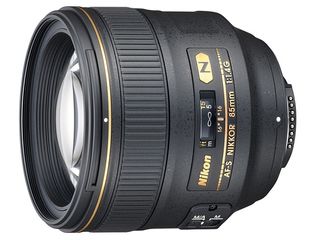Which lens? Choose the best lens for your DSLR
DSLR lenses explained: from fish-eye to telephoto

Sensor size
Different camera bodies have different sensor sizes, with full frame, APS-C and Micro Four Thirds being the three most common examples. Smaller sensors crop into the equivalent full frame image, which is why you may have heard the term "crop factor".
In order to understand this, imagine a sheet of A4 paper (this represents our full frame sensor) with an image projected to its exact proportions via a 50mm lens. If you were to lay a sheet of A5 paper over the top of this (let's call this our APS-C sensor) then the new frame's edges won't fit the image's outermost edges in, thus a crop has occurred. It looks like the image has been taken formed by a longer focal length lens.
In general, APS-C format cameras have a multiplication factor of around 1.5x, so 50mm multiplied by 1.5x equals a 75mm equivalent.
A Micro Four Thirds sensor is even smaller than APS-C size and so has a 2x crop factor. As a result, the same 50mm multiplies by 2x and produces images like a 100mm lens - hence it has 100mm equivalence.
The word "equivalence" is important, because focal length is a constant measurement that doesn't change, whatever sensor format you're using. Try not to get too bogged down in the maths, but visualising what's happening can help to make this often confusing matter more manageable.
Aperture
Another important factor to consider about a lens is its maximum aperture. The aperture - also described as the f-number or f-stop - is the size of the lens opening through which light passes.
Lenses that have a large maximum aperture such as f/1.8, f/2.0 or f/2.8 are generally more highly prized (and expensive) than those with maximum apertures of f/4 and f/5.6 because they allow more light in so that faster shutter speeds can be used. Hence why they're often called fast lenses.
Get daily insight, inspiration and deals in your inbox
Get the hottest deals available in your inbox plus news, reviews, opinion, analysis and more from the TechRadar team.
Fast lenses are useful in low light and when fast shutter speeds are required to freeze movement - for example in sports photography.
Another important factor with larger aperture lenses is that they enable greater control over depth of field.
Depth of field is the sharp zone that extends in front and behind the subject (or focal point) before it gradually becomes blurred.
Physics dictates that the larger the aperture (for example f/1.4), the shallower the depth of field or sharp zone. A smaller opening (for example f/22) produces much wider depth of field and avoids background blur.
The longer the focal length of the lens, and the closer the subject, the more restricted the depth of field is at any given aperture. Hence smaller apertures are required to get more of the image sharp when long lenses are used or the subject is closer to the camera.
Many zoom lenses have a variable maximum aperture, for example f/3.5-5.6. The first number refers to the maximum aperture at the widest angle setting; the second number to the maximum at the longest zoom setting.
Zoom lenses with a constant maximum aperture tend to be more expensive, because the exposure doesn't change as you zoom in or out.
Now take a breath, mull over those technical thoughts and read on for our full lens type guide, with example products for each type of lens from Canon, Nikon and other trusted camera brands.
Current page: Sensor size and aperture explained
Prev Page Key camera lens specifications explained Next Page Prime lensesMost Popular

